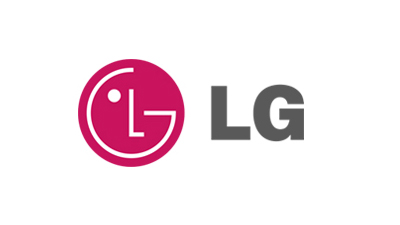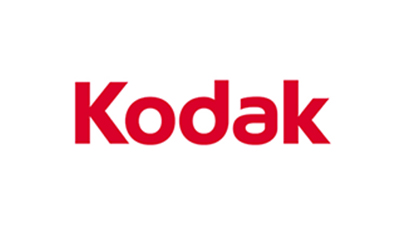
-
Report ID 138106 -
Published Date June 2023 -
Delivery Format PDF/PPT/Word -
Editor's Rating
-
Report Details
Report Overview
Generative AI in Media and Entertainment market refers to the application of generative artificial intelligence techniques in the media and entertainment industry. It involves the use of AI algorithms and models to create, modify, and enhance various forms of media content, including images, videos, music, and virtual environments. The market is driven by the increasing demand for personalized and engaging content, advancements in AI technologies, and the need for automation and efficiency in media production processes.
The Generative AI in Media and Entertainment Market is projected to exhibit strong growth potential, growing at a CAGR of 26.7% from 2023 to 2032. By the end of the forecast period, the market size is estimated to exceed USD 12,077 million, marking substantial growth compared to the initial valuation of USD 1,202 million in 2022.
This growth will be driven by the increasing use of generative AI in a variety of media and entertainment applications, such as:
- Virtual production: Generative AI can be used to create virtual sets and environments, which can be used for film and television production.
- Character creation: Generative AI can be used to create realistic and lifelike characters, which can be used for animation, video games, and other applications.
- Content generation: Generative AI can be used to generate new content, such as images, videos, and text. This can be used to create new forms of media and entertainment, as well as to personalize existing content for users.
Key Takeaways
- Generative AI in Media and Entertainment is transforming content creation and production by leveraging AI algorithms to generate and enhance media assets.
- The market offers opportunities for the development of AI-powered tools and platforms that automate creative tasks, enhance user experiences, and enable content personalization.
- Generative AI plays a larger role in areas such as video editing, visual effects, virtual reality (VR) content creation, and music composition.
- Integration of Generative AI in Media and Entertainment leads to improved productivity, cost savings, and the creation of immersive and interactive media experiences.
- Ethical considerations, copyright issues, and maintaining creative control are important factors to address in the responsible use of Generative AI in this industry.
Largest and Fastest Growing Market
The largest market for Generative AI in Media and Entertainment is currently in the film and video production industry. AI technologies are being utilized to automate tasks such as video editing, visual effects generation, and scene creation. The fastest-growing market is in the gaming industry, where generative AI is used to create dynamic and interactive game environments, characters, and narratives.
Market Dynamics
Drivers
The growth of the generative AI market in media and entertainment is being driven by a number of factors, including:
- The increasing demand for personalized content.
- The increasing availability of data.
- The decreasing cost of computing power.
- The growing popularity of streaming services.
- The increasing demand for immersive experiences.
Restraints
The growth of the generative AI market in media and entertainment is being restrained by a number of factors, including:
- The high cost of developing and deploying generative AI solutions.
- The lack of skilled personnel with the knowledge and experience to use generative AI in media and entertainment.
- The regulatory challenges associated with the use of generative AI in media and entertainment.
Opportunities
The generative AI market in media and entertainment offers a number of opportunities, including:
- The development of new forms of personalized content.
- The creation of new immersive experiences.
- The improvement of the efficiency of media and entertainment production.
- The development of new business models.
Challenges
The generative AI market in media and entertainment faces a number of challenges, including:
- The high cost of developing and deploying generative AI solutions.
- The lack of skilled personnel with the knowledge and experience to use generative AI in media and entertainment.
- The regulatory challenges associated with the use of generative AI in media and entertainment.
Key Market Segments
Based on Type
- Text-to-Image Generation
- Image-to-Image Generation
- Music Generation
- Video Generation
- 3D Modeling and Animation
Based on Application
- Gaming
- Film and Television
- Advertising and Marketing
- Virtual Reality (VR) and Augmented Reality (AR)
- Music and Sound Production
- Other Applications
Based on Deployment
- Cloud-Based
- On-Premises
- Hybrid
Key Regions
- North America
- The US
- Canada
- Mexico
- Western Europe
- Germany
- France
- The UK
- Spain
- Italy
- Portugal
- Ireland
- Austria
- Switzerland
- Benelux
- Nordic
- Rest of Western Europe
- Eastern Europe
- Russia
- Poland
- The Czech Republic
- Greece
- Rest of Eastern Europe
- APAC
- China
- Japan
- South Korea
- India
- Australia & New Zealand
- Indonesia
- Malaysia
- Philippines
- Singapore
- Thailand
- Vietnam
- Rest of APAC
- Latin America
- Brazil
- Colombia
- Chile
- Argentina
- Costa Rica
- Rest of Latin America
- Middle East & Africa
- Algeria
- Egypt
- Israel
- Kuwait
- Nigeria
- Saudi Arabia
- South Africa
- Turkey
- United Arab Emirates
- Rest of MEA
Key Players
- OpenAI, Inc.
- NVIDIA Corporation
- Adobe Inc.
- IBM Corporation
- Microsoft Corporation
- Google LLC
- Autodesk, Inc.
- Unity Technologies
- Epic Games, Inc.
- Other Key Players
FAQs
Here are some FAQs about generative AI in media and entertainment, along with answers:
1. What is generative AI?
Generative AI is a type of artificial intelligence that can be used to create new data. This data can be in the form of text, images, or code. Generative AI is used in a variety of applications, including media and entertainment.
2. How can generative AI be used in media and entertainment?
Generative AI can be used in media and entertainment to improve the efficiency of production, create new forms of content, and personalize experiences for users. For example, generative AI can be used to:
- Create virtual sets and environments for film and television production.
- Generate realistic and lifelike characters for animation, video games, and other applications.
- Generate new content, such as images, videos, and text.
- Personalize content for users based on their interests and preferences.
3. What are the benefits of using generative AI in media and entertainment?
The benefits of using generative AI in media and entertainment include:
- Increased efficiency of production.
- Creation of new forms of content.
- Personalization of experiences for users.
- Improved engagement with users.
4. What are the challenges of using generative AI in media and entertainment?
The challenges of using generative AI in media and entertainment include:
- The high cost of developing and deploying generative AI solutions.
- The lack of skilled personnel with the knowledge and experience to use generative AI in media and entertainment.
- The regulatory challenges associated with the use of generative AI in media and entertainment.
-
Table Of Content
Research Insights & Deliverables
 Development and Future Forecast
Development and Future Forecast Competitive benchmarking
Competitive benchmarking Company Revenue Statistics
Company Revenue Statistics Rising Regional Opportunities
Rising Regional Opportunities Technology Trends and Dynamics
Technology Trends and Dynamics Technology Assessment
Technology Assessment
-
Inquiry Before Buying
Research Insights & Deliverables
 Development and Future Forecast
Development and Future Forecast Competitive benchmarking
Competitive benchmarking Company Revenue Statistics
Company Revenue Statistics Rising Regional Opportunities
Rising Regional Opportunities Technology Trends and Dynamics
Technology Trends and Dynamics Technology Assessment
Technology Assessment
-
Request Sample
Research Insights & Deliverables
 Development and Future Forecast
Development and Future Forecast Competitive benchmarking
Competitive benchmarking Company Revenue Statistics
Company Revenue Statistics Rising Regional Opportunities
Rising Regional Opportunities Technology Trends and Dynamics
Technology Trends and Dynamics Technology Assessment
Technology Assessment














